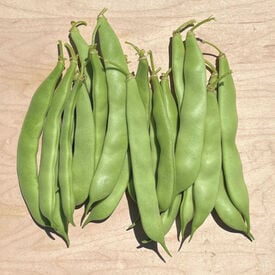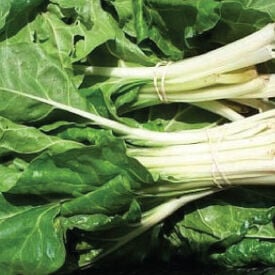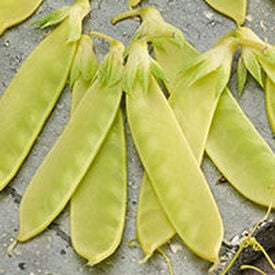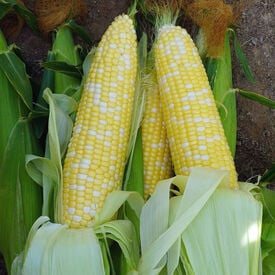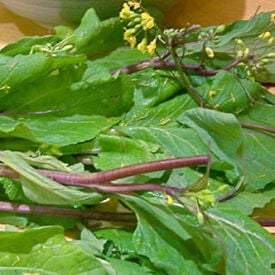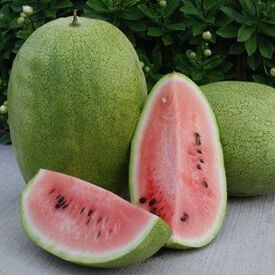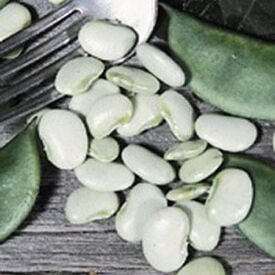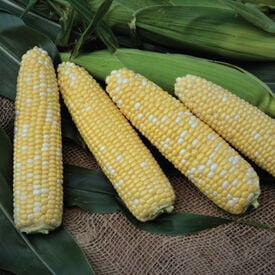The Hard Red Wheat Sprouts can be used to make the classic Wheat Grass Power Drink! Hard Red Wheat is an easy to grow sprout and is delicious on salads, sandwiches, breakfast cereal and living bread. Wheat seed provides many health benefits that includes improving digestion. Time to Sprout: 2-3 Days Flavor: Soft and chewy grain. Creamy Nutrition: Vitamins B, C, & E, Calcium, Iron, Magnesium, Pantothenic Acid, & Phosphorous, Protein: 15%
The Taylor Dwarf Horticulture Bean, also known as the Taylor Horticulture Bean or simply Taylor Dwarf Bean, is a popular heirloom bean variety prized for its delicious flavor and historical significance. This bean variety has a rich history dating back to the early 19th century in the United States. It is a bush-type bean, which means it grows in a compact, bushy form rather than climbing like pole beans. Taylor Dwarf Horticulture Beans are highly regarded for their superb taste, which is characterized by a creamy texture and a slightly nutty, earthy flavor. The beans are typically harvested when they are young and tender, making them ideal for fresh consumption or canning. The pods of the Taylor Dwarf Horticulture Bean are medium-sized and typically measure around 4-5 inches in length. The plants themselves are relatively small and bushy, reaching a height of about 18-24 inches, which makes them suitable for smaller gardens or container gardening. This variety has a relatively short maturity period, typically taking around 55-60 days from planting to harvest. The beans themselves are a pale cream or off-white color. Taylor Dwarf Horticulture Beans are known for their good disease resistance, which helps ensure a healthy crop. In terms of yield, you can expect a respectable harvest of beans per row, with each plant producing multiple pods. Proper spacing between plants should be around 4-6 inches apart in rows that are spaced about 18-24 inches apart. These beans thrive in well-drained soil with good organic matter content and prefer full sun for optimal growth. Adequate moisture and regular harvesting will help ensure a bountiful crop of these delicious and historically significant beans.
The Large White Ribbed Swiss Chard has a wide and flattened white stem. This variety is a popular heirloom chard that has tender and thick smooth leaves. The Large White Ribbed is very tasty and can even substitute asparagus when creamed.
The Golden Sweet Pea is really the gold standard for yellow shelling peas! This yellow pod snow pea grows to be around 3 inches long. This pea has a wonderful sweet taste and can be eaten raw in salads or steamed as a side dish. The large 5-6 foot vines need to be trellised and will grow beautiful purple flowers. Certified Organic. Learn more about our organic seeds.
Delectable RM has large well-filled ears and dark green husk. It has a wide range of adaptability and versatility in several markets. It is pleasing to the consumer for it's good texture and taste. Delectable RM has also been given an added boost with a stronger disease package, making a favorite more favorable. Intermediate Resistance: Stewart’s Wilt, NCLB
China Gold (F1) cabbage has exceptional color both inside and out. It has a compact frame, good weight and is very slow bolting.
SuperStar is a hybrid cabbage that produces the highest quality fresh market cabbages. It has excellent wrappers for a fancy pack along with excellent holding ability in the field and after harvest.
The Hon Tsai Tai has deep purple tender stalks with a slight mustard flavor that is great in different salads or cooked into stir fries! Its green leaves have petite florets that are best harvested right before the bright yellow blossoms open. Hon Tsa Tai is best grown in mid to late summer.
Sweet Princess has a thin yellow-green rind with green stripes. Its flesh is crisp and a deep pink color. These 20 to 30 lbs. fruits are sweet and good shippers. Certified Organic.
Limoncito is a delicious mini-plum variety with good yields. Excellent for fresh eating and salads. Bright yellow fruits that burst with flavor.
The Eastland bean, scientifically known as Phaseolus vulgaris 'Eastland,' is a popular variety of bush bean that hails from the United States. It is highly esteemed for its exceptional taste and ease of cultivation. Eastland beans belong to the family Fabaceae and are a warm-season crop commonly grown in gardens and small-scale farms. In terms of taste, Eastland beans are celebrated for their tender, crisp texture and rich, earthy flavor. They are a delight to eat both raw and cooked. The pods of Eastland beans are of medium size, typically measuring around 4-5 inches in length. The plants themselves are compact and bushy, making them suitable for smaller gardens and spaces. These beans have a relatively short maturity period, typically taking around 70-75 days from planting to harvest. The beans are known for their vibrant green color, making them visually appealing as well. Eastland beans are generally resistant to common bean diseases such as bean mosaic virus and rust. They are known to provide a good yield per acre, often ranging from 800 to 1,200 pounds of beans per acre, depending on growing conditions and care. Proper spacing is crucial for their growth, with plants typically spaced 3-4 inches apart in rows that are about 18-24 inches apart. These beans thrive in well-drained soil with full sun exposure and require regular watering to maintain consistent moisture levels in the soil. Overall, Eastland beans are a favorite among gardeners and farmers for their taste, disease resistance, and relatively quick harvest time.
A full season high eating quality hybrid with ideal ear size for roadside markets. Cadence XR has an attractive husk package with excellent field performance. Xtra-Tender™ eating quality.

